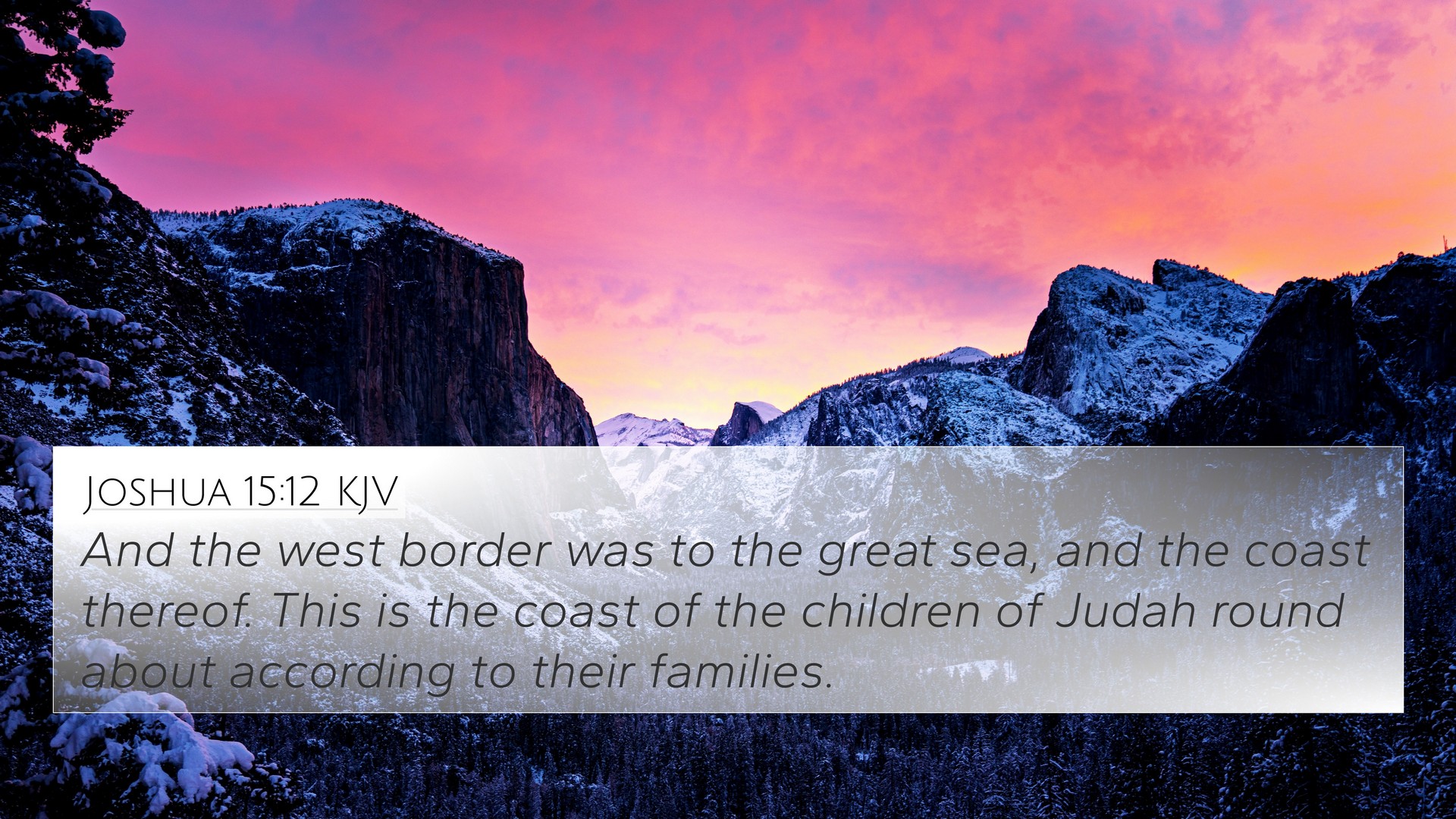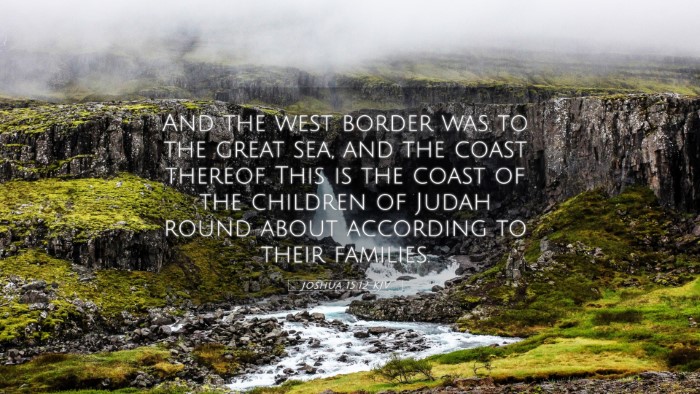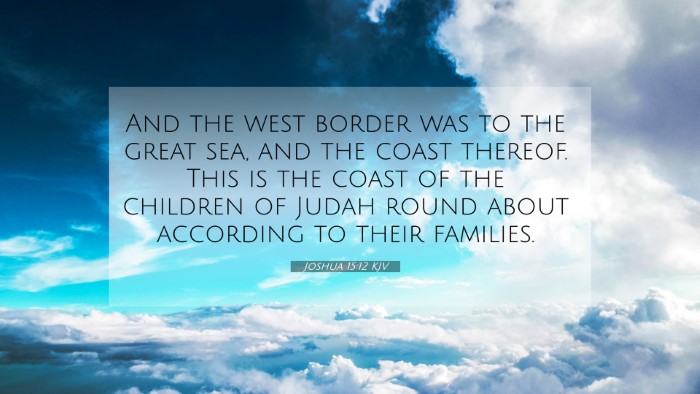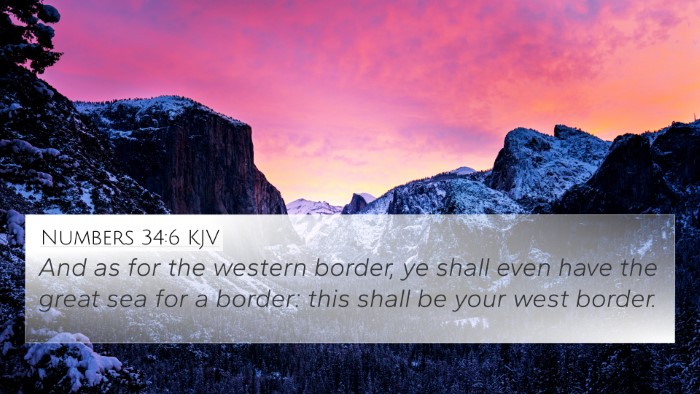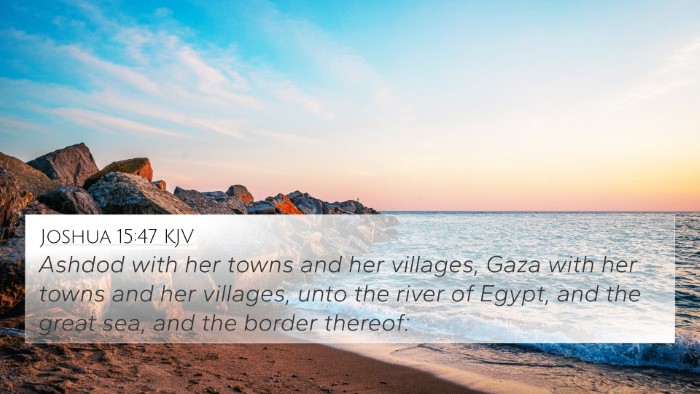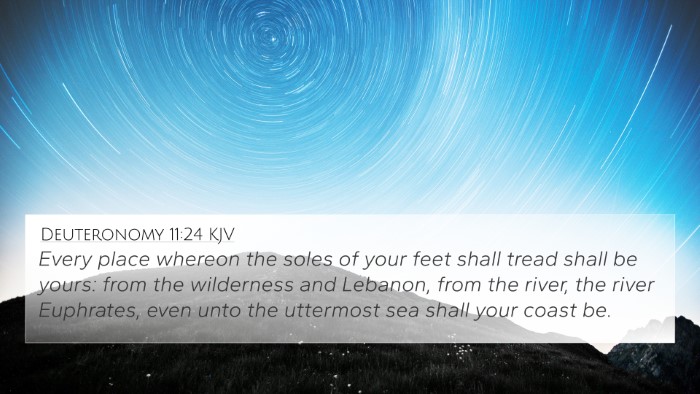Bible Verse Meaning: Joshua 15:12
Joshua 15:12 states:
"And the east border was the salt sea, even unto the end of Jordan. And this was the inheritance of the tribe of the children of Judah." (KJV)
This verse serves as a critical marker in the narrative of the land distributions to the tribes of Israel, specifically focusing on the boundaries of the tribe of Judah. Understanding this verse involves examining its geographical, theological, and historical context.
Geographical Context
The mention of the "salt sea" refers to the Dead Sea, a significant geographical feature in the region. It served not only as a natural boundary but also as a symbol of the prosperity and challenges that Judah would face. Both Matthew Henry and Albert Barnes note that the Dead Sea represents the end of a very desolate area, reflecting the sometimes harsh realities of the land God provided.
Theological Implications
This verse also underscores God's faithfulness to His promises. Adam Clarke emphasizes that the inheritance allotted to each tribe, including Judah, reveals God’s divine plan and the fulfillment of His covenant with Abraham. The tribe of Judah holds a unique position as the lineage of King David and, by extension, Jesus Christ.
Historical Significance
Historically, the allocation system was established to ensure that the tribes maintained their distinct identities and territories, a theme highlighted by both Clarke and Henry. This emphasizes community and heritage within God’s chosen people.
Cross-References to Enhance Understanding
To deepen our understanding of Joshua 15:12 and its implications, we can consider the following Bible verse cross-references:
- Numbers 34:3-12: Details the borders of Canaan, providing context for the land allocations.
- Deuteronomy 3:17: Refers again to the land beyond the Jordan, emphasizing its significance.
- Joshua 14:1-5: Discusses the inheritance of the tribes, leading to Judah's designation.
- Luke 3:33: Connects Jesus’ genealogy to the tribe of Judah, linking Old Testament promises to New Testament fulfillment.
- Hebrews 7:14: States that Jesus came from the tribe of Judah, which reaffirms the theological significance of this tribe's inheritance.
- Matthew 1:2-3: Lists the lineage of Jesus, beginning with Judah, highlighting the tribe's ongoing importance.
- Genesis 49:10: Prophesies the leadership role of Judah, connecting it to royal authority and lineage.
- 1 Chronicles 2:1-3: Provides historical context to Judah's family line and its significance in Israel's history.
- Micah 5:2: Prophecies about the ruler coming from Bethlehem, within the territory of Judah.
- Revelation 5:5: Jesus as the Lion of the Tribe of Judah, connecting the Old Testament promise to the New Testament fulfillment.
Connections Between Bible Verses
Incorporating the above cross-references reveals inter-Biblical dialogue surrounding Judah’s role within God’s redemptive history. The connections between these verses illustrate the unfolding narrative of God's plan throughout the scriptures, from the establishment of the tribes to the Messiah’s lineage.
Tools for Bible Cross-Referencing
For those interested in exploring these connections further, utilizing tools for Bible cross-referencing such as a Bible concordance or a cross-reference Bible study guide can be invaluable. These resources aid in understanding the thematic Bible verse connections, allowing readers to trace and explore interrelated verses through a more structured approach.
Conclusion
Ultimately, Joshua 15:12 serves not only as a point of historical reference but also as a rich vein of theological significance. The cross-references reveal a tapestry of God’s faithfulness and the continued importance of the tribe of Judah throughout biblical history. Understanding these connections enhances our comprehension of God’s overarching narrative and the specific ways He manifests His promises to His people.
